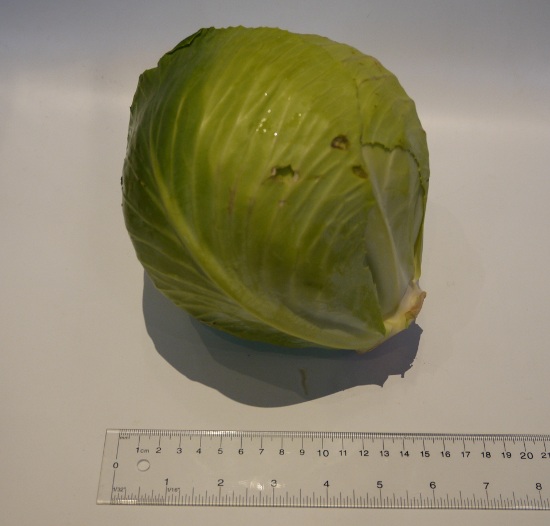Sauerkraut owes its existence to this head cabbage

Sauerkraut owes its existence to this head of cabbage
Sauerkraut, a popular condiment and ingredient in many traditional dishes, owes its existence to the humble head of cabbage. This fermented cabbage dish has a rich history dating back thousands of years and has become a staple in various cuisines around the world.

The Origins of Sauerkraut
Cabbage, the key ingredient in sauerkraut, has been cultivated for over 4,000 years. Its origins can be traced back to ancient China, where it was highly valued for its nutritional and medicinal properties. From there, cabbage spread to Europe, where it quickly became a dietary staple.
The Fermentation Process
To understand why cabbage turns into sauerkraut, it’s important to delve into the science of fermentation. Fermentation is a natural process that occurs when microorganisms, such as bacteria or yeast, metabolize sugars in the presence of moisture. In the case of sauerkraut, the fermentation is lactic acid fermentation, which is carried out by lactic acid bacteria.

When cabbage is shredded, salted, and left to ferment, lactic acid bacteria present on the cabbage leaves convert the sugars in the cabbage into lactic acid. This acidic environment inhibits the growth of harmful bacteria, preserving the cabbage and giving sauerkraut its distinct tangy flavor.
Nutritional Benefits of Sauerkraut
In addition to its unique taste, sauerkraut offers numerous health benefits. It is low in calories, fat-free, and packed with essential vitamins and minerals. Sauerkraut is also a great source of dietary fiber and contains beneficial probiotics that support gut health.
Culinary Versatility
Sauerkraut’s versatility extends beyond being a simple condiment or side dish. It is a key ingredient in traditional dishes such as Reuben sandwiches, sausages, and various Eastern European stews. Sauerkraut’s tangy and crunchy texture adds depth and complexity to these dishes, elevating them to a whole new level of flavor.
Cultural Significance
Sauerkraut holds a special place in many cultures worldwide. It is a symbol of resilience and resourcefulness, as people have relied on the fermentation process to preserve cabbage during harsh winters when fresh vegetables were scarce. From Germany’s sauerkraut festivals to Korea’s kimchi-making traditions, sauerkraut has become deeply embedded in cultural rituals and celebrations.
Incorporating Sauerkraut Into Your Diet
If you want to incorporate sauerkraut into your diet, there are numerous ways to enjoy it. Apart from using it as a condiment, you can add sauerkraut to salads, stir-fries, or even enjoy it straight from the jar. The probiotic properties of sauerkraut make it a great addition to your overall gut health.
Conclusion
Sauerkraut owes its existence to the head of cabbage. The fermentation process has allowed cabbage to be preserved and transformed into a flavorful and healthy condiment enjoyed by many around the world. Whether you’re savoring sauerkraut in a traditional dish or exploring new culinary possibilities, you can appreciate the humble cabbage for its contribution to this versatile food.
Tags
Share
Related Posts
Quick Links
Legal Stuff

